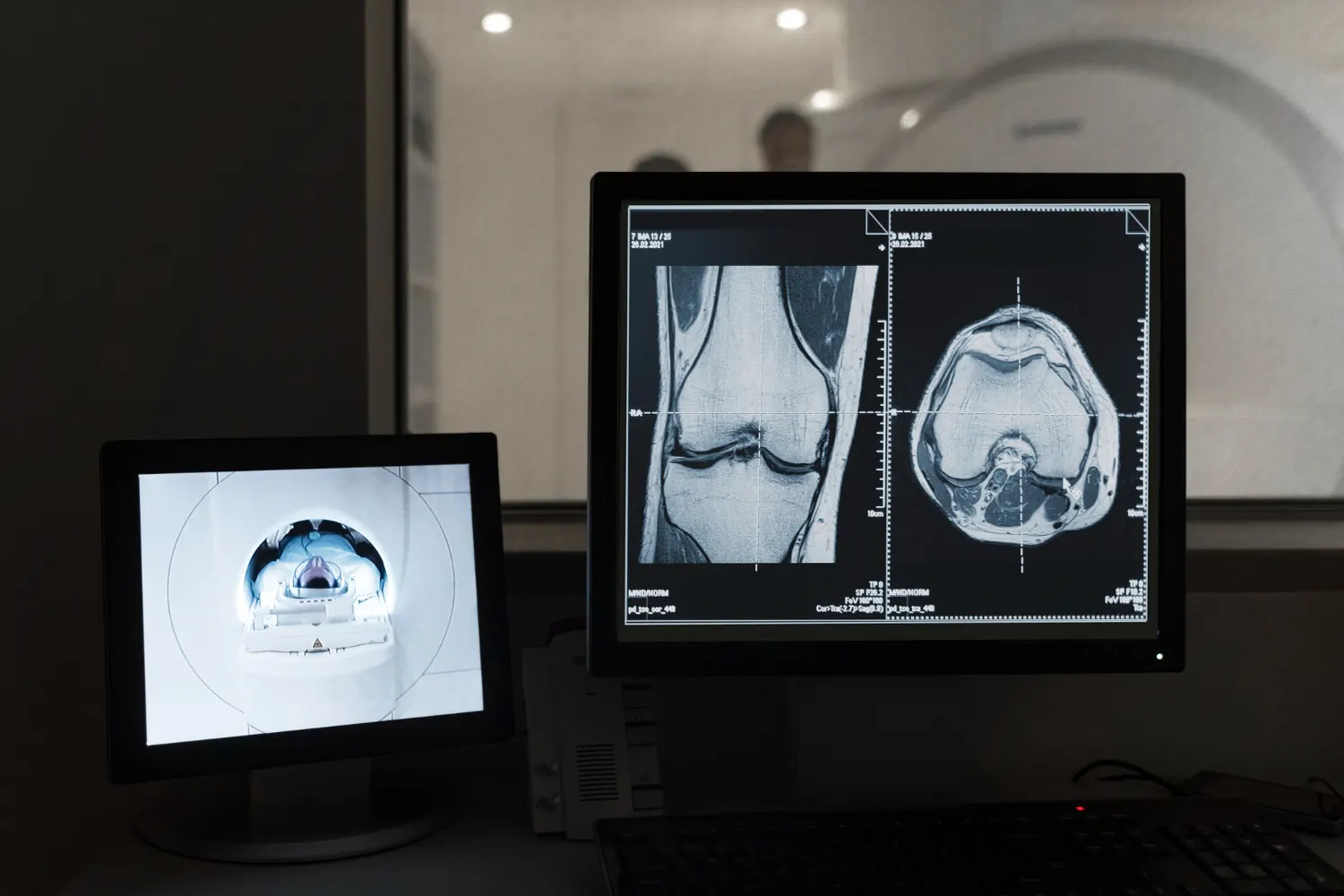In a world where early detection can dramatically improve health outcomes, full body scans have emerged as a powerful tool in preventive healthcare. These scans promise the ability to identify diseases—including cancer—before symptoms even appear. But with so many options, varying costs, and ongoing debates around safety, many patients are left wondering: are full body scans worth it?
This comprehensive guide breaks down the different types of full body scans, examines their safety profiles, compares costs, and explains how these tools can aid in early cancer detection. We also highlight why full body ultrasound may be the most promising choice for accessible, safe, and affordable preventive screening.
Table of Contents
What Is a Full Body Scan?
A full body scan is a diagnostic imaging procedure that evaluates multiple regions of the body—head, neck, chest, abdomen, pelvis, and sometimes limbs—in a single session. The goal is to detect abnormalities such as tumors, cysts, organ enlargement, or vascular disease before they cause symptoms. Depending on the technology used, full body scans can offer detailed images of soft tissue, bones, blood vessels, and organs.
Common Technologies Used:
- CT (Computed Tomography) Scans
CT scans use X-rays to generate cross-sectional images of the body. They provide high-resolution images and are useful for identifying tumors, blood clots, and organ abnormalities. However, they also expose patients to ionizing radiation, which may increase long-term cancer risk with repeated use. - MRI (Magnetic Resonance Imaging)
MRI uses powerful magnets and radio waves to visualize soft tissue. It is particularly effective for evaluating the brain, spinal cord, joints, and organs like the liver and pancreas. MRI does not use ionizing radiation but can be expensive and time-consuming. - PET (Positron Emission Tomography) Scans
PET scans highlight metabolic activity by tracking a radioactive tracer. They are especially valuable in detecting cancer and monitoring its spread. However, due to the use of radioactive substances, PET scans are not typically used for routine screening. - Ultrasound (Sonography)
Ultrasound uses high-frequency sound waves to create real-time images of internal organs. It is safe, non-invasive, cost-effective, and radiation-free, making it increasingly popular for whole-body screening in low-risk patients.
Benefits of Full Body Scans
The idea of a “snapshot” of your internal health is appealing, and for good reason. Full body scans offer multiple benefits, especially when used wisely and in the appropriate clinical context.
1. Early Detection of Cancer and Chronic Disease
Detecting cancer at Stage I instead of Stage III or IV can mean the difference between curative treatment and palliative care.
- Scans can identify asymptomatic tumors in organs like the lungs, liver, kidneys, and ovaries.
- Early intervention often leads to less aggressive treatment and higher survival rates.
2. Peace of Mind
For patients with a strong family history of cancer or chronic illness, full body scans provide reassurance.
- Knowing that no significant abnormalities are present can ease anxiety and reduce unnecessary health-related stress.
- In contrast, if something is detected, the scan allows for proactive management instead of reactive care.
3. Health Baseline Creation
Imaging can help establish a visual “baseline” of internal organs and systems for comparison with future scans.
- This baseline is valuable for tracking slow-growing tumors, cysts, or fatty liver progression over time.
- It can also assist doctors in identifying subtle changes that may signal early disease.
4. Non-Invasive and Convenient (for Ultrasound and MRI)
Modern imaging technologies allow comprehensive internal evaluations without invasive procedures or anesthesia.
- Ultrasound, in particular, is done with a handheld probe and gel—no radiation or contrast agents required.
- Scans can be completed in as little as 30–60 minutes depending on the modality used.
Full Body Ultrasound: The Safe and Affordable Alternative
While CT, MRI, and PET scans all have their merits, full body ultrasound has gained traction as a frontline screening tool—especially for individuals who want regular checkups without the risks of radiation or contrast agents.
Key Advantages:
- Radiation-Free
Unlike CT and PET scans, ultrasound does not expose the body to ionizing radiation. This makes it safe for repeated use, especially in younger patients or those seeking annual screenings. - Cost-Effective
A full body ultrasound typically costs a fraction of what CT or MRI scans do. While prices vary by provider, most ultrasound-based screenings range from $200 to $800 compared to $1,500+ for MRI and even more for PET/CT. - High Utility for Abdominal and Pelvic Organs
Ultrasound excels at visualizing the liver, kidneys, gallbladder, pancreas, spleen, bladder, uterus, and ovaries. Many common cancers and diseases originate in these organs. - No Need for Contrast Agents
MRI and CT often require contrast dye, which can lead to allergic reactions or kidney issues. Ultrasound does not rely on these agents. - Widely Accessible
Portable ultrasound devices allow these scans to be performed in outpatient clinics, imaging centers, and even mobile units, increasing access for underserved populations.
What Can Full Body Scans Detect?
Depending on the imaging modality used, full body scans can identify a wide variety of conditions, some of which may otherwise go unnoticed until they progress.
Detected Conditions:
- Cancers: Lung, liver, pancreatic, kidney, ovarian, prostate, breast, lymphomas, and others.
Full body scans can help catch cancers in early stages, improving treatment outcomes and survival rates. - Aneurysms and Vascular Disease:
CT and ultrasound scans can detect aortic aneurysms, arterial plaques, and deep vein thrombosis. Early identification reduces the risk of sudden cardiac events or stroke. - Organ Abnormalities:
Cysts, fibroids, fatty liver disease, gallstones, kidney stones, and enlarged organs can all be seen via full body imaging. - Thyroid and Lymph Node Issues:
Swollen lymph nodes or suspicious nodules in the thyroid gland may signal infection, autoimmune disorders, or malignancy. - Spinal and Musculoskeletal Problems:
MRI is particularly useful for identifying herniated discs, spinal stenosis, or hidden tumors along the spinal column. - Lung Nodules:
Especially with low-dose CT, lung nodules that may indicate early lung cancer can be discovered in high-risk individuals.
Risks and Limitations of Full Body Scans
Despite the appeal of full body scans, they are not without concerns. Overuse or misuse of imaging can lead to unintended consequences.
1. Radiation Exposure (CT and PET)
Excessive exposure to ionizing radiation increases long-term cancer risk.
- A single CT scan can deliver the same radiation as 100–500 chest X-rays.
- PET scans involve radioactive tracers that may accumulate in tissues, although generally considered safe when clinically indicated.
2. False Positives and Overdiagnosis
Not all findings require treatment, but once discovered, they may lead to unnecessary tests, biopsies, or surgery.
- Incidentalomas (incidental findings) can provoke anxiety and lead to overtreatment.
- For example, small thyroid nodules are common but rarely cancerous, yet often prompt further investigation.
3. Contrast Risks (CT/MRI)
Contrast agents can trigger allergic reactions or impair kidney function, particularly in older adults or those with pre-existing renal disease.
- Gadolinium (MRI contrast) has been linked to rare but serious conditions like nephrogenic systemic fibrosis.
- Iodinated contrast used in CT may cause thyroid dysfunction or allergic responses.
4. Cost and Insurance Coverage
Most insurance plans do not cover full body scans unless medically necessary.
- Out-of-pocket costs can deter patients from pursuing scans, especially MRI or PET-based evaluations.
- Ultrasound, by contrast, offers a more affordable solution without compromising safety.
Comparing Scan Modalities
| Feature | CT | MRI | PET | Ultrasound |
|---|---|---|---|---|
| Radiation | Yes | No | Yes | No |
| Contrast Required | Often | Often | Yes | No |
| Cost | $$–$$$ | $$$ | $$$$ | $–$$ |
| Best For | Lungs, bones | Brain, spine, soft tissues | Cancer detection | Abdomen, pelvis, thyroid |
| Safety | Moderate | High | Moderate | Very High |
| Accessibility | Widespread | Moderate | Limited | Very High |
Who Should Consider a Full Body Scan?
Not every person needs a full body scan, but specific populations may benefit from routine or baseline imaging.
Ideal Candidates:
- Individuals with Family History of Cancer
Those with a genetic predisposition or familial cancer syndromes should consider screening every 1–2 years. - High-Risk Occupations or Environments
People exposed to chemicals, radiation, or carcinogens at work may benefit from preventive imaging. - Patients with Unexplained Symptoms
Nonspecific symptoms like fatigue, weight loss, or abdominal discomfort may prompt full body screening to rule out serious pathology. - Those Seeking Preventive Health Optimization
Health-conscious individuals who want baseline data for longevity planning may benefit from full body ultrasound. - Cancer Survivors
Individuals in remission may undergo periodic full body scans to detect recurrence or metastasis.
How to Prepare for a Full Body Scan
Preparation varies depending on the type of scan, but general tips include:
- Fasting: Some scans (especially abdominal ultrasound or PET) require fasting for 6–8 hours.
- Hydration: Drinking water before an ultrasound can enhance pelvic imaging.
- No Metal or Jewelry: For MRI scans, all metal objects must be removed to prevent interference.
- Medical History: Share any prior conditions, allergies (especially to contrast), or surgical implants with the technician.
Full Body Ultrasound as the Future of Preventive Imaging
Full body scans offer a powerful lens into your internal health—but not all scans are created equal. While CT, MRI, and PET scans are valuable in diagnosis and treatment planning, they come with costs, radiation risks, and potential for overdiagnosis.
Full body ultrasound stands out as a practical, safe, and accessible choice for early cancer detection and preventive screening. It is radiation-free, affordable, and widely available—making it ideal for routine use, especially in asymptomatic individuals or those seeking peace of mind.
As medicine continues shifting toward prevention over treatment, tools like full body ultrasound are poised to play a pivotal role in catching diseases before they become life-threatening.





0 Comments